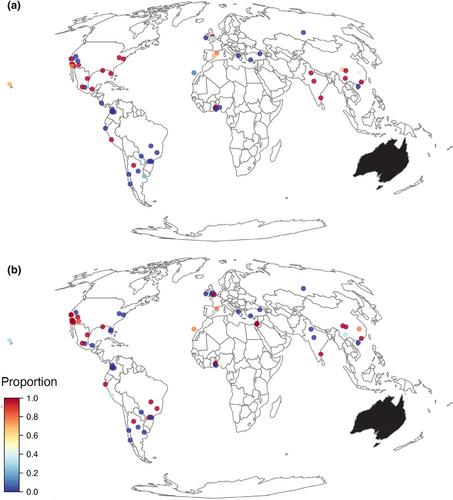Eucalypts are important and popular urban tree species across cities worldwide. However, little is known about how their climatic niche breadth (CNB) and functional traits predict their success, and vulnerability, to current climate change in cities. We assessed the relationship between the CNB of eucalypts and key traits to understand their tolerance to climate change.
Global urban areas, 66 cities in 21 countries.
1981 to 2022.
Fifty ‘eucalypt’ species belonging to the genera Eucalyptus, Angophora and Corymbia.
We used the species' safety margin concept to determine cities where eucalypts were planted outside the limits of their CNB, as defined from the native range, considering two extreme variables, maximum temperature of the warmest month (MTWM) and precipitation of the driest month (PDM). We assessed correlations between functional traits (leaf δ13C, leaf dry mass, leaf length, leaf N per dry mass, wood density) and negative safety margins, indicative of tolerance to non-native conditions.
In total, 42 species planted in 40 cities exceeded their safety margins for MTWM, while 43 species in 38 cities exceeded their safety margins for PDM. Within 24 cities, all species exceeded their native CNB for both MTWM and PDM. The cities of Atakpame (Togo), Chennai (India), Chongqing (China) and the US cities of Phoenix and Riverside had the highest richness of eucalypt species growing outside their native CNB. Broadly, species with wide CNB, small leaves, high δ13C, high leaf N per dry mass and high wood density were more likely to persist in cities where climatic conditions exceeded their native CNB.
Eucalypts occupy many cities experiencing climatic conditions outside their native CNB. Species with traits characteristic of heat and drought tolerance are more often planted in cities where climatic conditions may exceed their CNB native limits.



